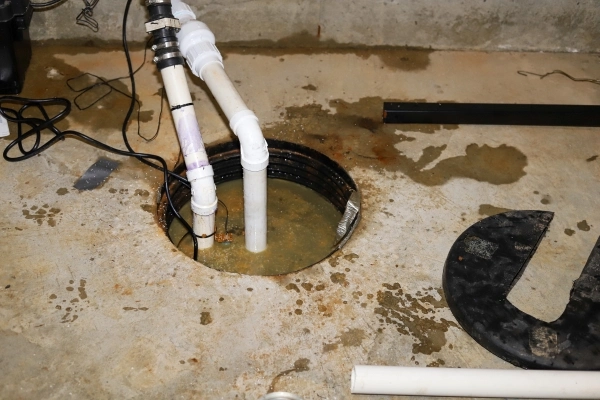
Keeping your sump pump in good working order is important because it helps keep your basement dry and moisture-free. However, during cold weather, it’s possible for your sump pump line to freeze. Although this is an inconvenience, a frozen sump pump line could also lead to more extensive damage like a flooded basement.
Read on, to learn about what to do if your sump pump line is frozen and how to thaw a frozen sump pump line safely.
Why Is My Sump Pump Outlet Frozen?
Before you learn how to thaw a frozen sump pump line, it helps to understand why your sump pump outlet is frozen to begin with. The most common cause is water sitting in the pump. When water isn’t running, it’s more likely to freeze. Lack of insulation is another common reason your pump outlet line will freeze. A properly insulated line should be enough to prevent freezing.
What to Do If Your Sump Pump Line is Frozen
Do you know what to do if your sump pump line is frozen? It’s critical to take the right steps to fix the problem without damaging the pump in the process. Follow these six steps to safely thaw the line when your sump pump outlet is frozen.
- Safety first! Start by turning off the sump pump’s circuit breaker before attempting any fixes or repairs involving the pump.
- Turn up the heat. Increasing the temperature in your basement can help defrost the frozen water in the pump and the outlet line. So, bump up the thermostat or set up a space heater near the pump to warm things up.
- Release any of the remaining water from the pump by opening the drain. If there’s a decent amount of water remaining, you might need to use a hand pump or wet/dry vac to get the rest.
- Inspect the line for any blockages from debris or ice. Clear the line as much as you can to help promote proper water flow.
- Remove the drain line from the sump pump.
- Carefully pour hot water into the frozen line until the water no longer backs up.
Related Topic: Should There Be Water in My Sump Pump Pit?
How to Prevent a Frozen Sump Pump Discharge Line
The best way to make sure your sump pump is ready when you need it is to prevent freezing in the first place. Here are some tips to help you avoid a frozen sump pump line:
- Don’t turn off the water in your home. When water is moving through pipes, it’s less likely to freeze, and that holds true for your sump pump line too.
- Insulate, insulate, insulate! One of the easiest ways to keep the pump outlet from freezing is to protect it from cold air. Proper insulation is your best defense against a frozen sump pump line.
- Redirect the wastewater away from the pump. The more distance you can create between the wastewater and your pump, the less likely it is to back up and lead to freezing. Upgrading to a freeze-resistant hose to carry the discharge to the wastewater area can also help reduce the risk of freezing. Keep the hose buried as far underground as possible; the deeper it is, the better protected it will be from cold temperatures.
Need Help? Call the Pros
Knowing how to prevent a frozen sump pump discharge line and having a safe process for thawing the outlet can give you peace of mind that could prevent water damage to your home.
If you think you have a frozen sump pump, and you don’t feel confident dealing with it yourself, contact your local Mr. Rooter Plumbing. We can quickly and safely resolve the problem and inspect the rest of your system to make sure no other damage has occurred. Give us a call to get your sump pump working again and to keep your home safe. You can also request a job estimate online.

